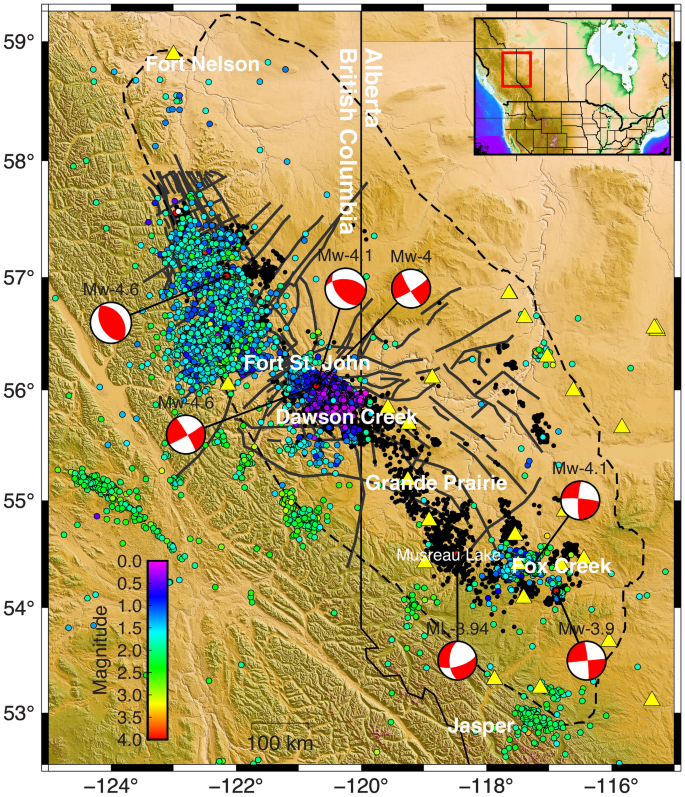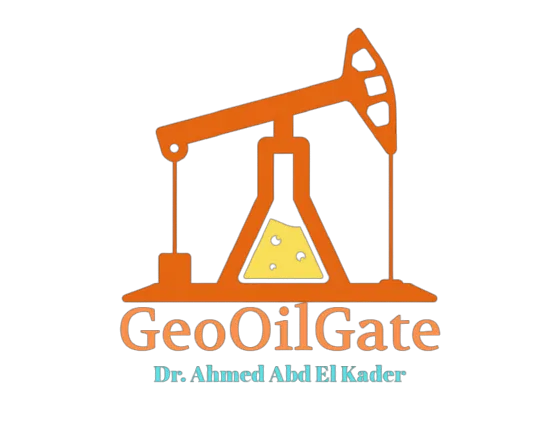Hydraulic stimulation to enhance energy extraction from geothermal and unconventional resources is typically accompanied by seismicity because injection changes pore pressures and temperatures, facilitating slippage of fractures and faults. Induced seismicity carries potential risk if events are large enough to damage infrastructure. The uncertainty invariably associated with the state of stress measurements and subsurface geomechanics parameters affects the analysis of fault slip and seismicity induced resulting from hydraulic fracturing. In this study, a probabilistic approach is used to assess the slip tendency of known faults crossing the compartmentalized Montney Formation of western Alberta and northeastern British Columbia. We first divide the formation into four different stress areas based on pore pressure deviations from hydrostatic. In each stress area, geomechanics parameters are expressed as probability distributions using multivariable datasets from borehole petrophysical data to injection-induced focal mechanisms. Monte Carlo simulations are applied to assess the potential slip tendency of local faults. We display the cumulative distribution function of critical pore pressure to cause slip on each fault by using analyses of the parameters of the Mohr–Coulomb shear failure criterion and local tectonic stress state. The results provide useful input for seismic hazard assessment and risk mitigation for local faults affected by high-rate fluid injection.
Introduction
The Montney Formation, a prominent unconventional shale gas and liquids resource, covers approximately 130,000 km2 in northwest Alberta and northeast British Columbia. The area is one of the most productive unconventional hydrocarbon resources in the Western Canada Sedimentary Basin (WCSB). According to a 2013 study by the British Columbia Oil and Gas Commission and the Alberta Energy Regulator, the Montney Formation can produce 12,719 billion m3 of marketable natural gas, 2,308 million m3 of marketable natural gas liquids (NGL), and 179 million m3 of marketable oil1. By the end of 2019, more than 3600 wells had been completed in the Montney Formation just in British Columbia2.
Shale gas and shale oil production from the Montney play has grown with the use of multi-stage HF (Hydraulic Fracture stimulation) technology. Supported by high oil prices and new HF technology availability, development started in 2005 and accelerated significantly in 2011; since then, the seismicity rate has increased3,4,5,6. More than 200 MW > 3 earthquakes within the area 52° N–60° N and 114° W–126° W are spatiotemporally associated with HF operations (see Figure S1 in Supplementary Information). In the last decade, noticeably higher seismicity rates have been observed in previously quiescent areas of British Columbia and western Alberta (Fig. 1)3,4,5,6. The anthropogenic seismicity for this area includes some of the largest MW values reported globally, including events near Fort St. John of MW 4.6 on August 17, 20155, and MW 4.2 on November 30, 20187. Most of these occur during HF treatments and are spatially and temporally restricted to the region around the wells4. MW 4.6 on August 17, 2015, for example, occurred after five days of fluid injection of 65,000 m3 in the Lower Montney Formation (depth of 1.9 km)5 (see Figure S2 in Supplementary Information). The area between Fort St. John and Dawson Creek, BC (the Kiskatinaw area) and the northern Montney trend are the seismogenic regions within the Montney depositional area8 (Fig. 1).




